Kokubyaku Katana Sword (黒白) specifications
- Hand-forged by our master swordsmiths.
- White and black manganese steel blade, sharpened or unsharpened at choice, full tang.
- Hamon (刃文): Midare Gunome Hamon.
- Bo-Hi (棒樋): visible on the blade.
- Scabbard (Saya 鞘): White and black lacquered wood with a brushed effect, black kojiri and koiguchi.
- Sageo (下げ緒): Black.
- Handle (Tsuka 柄): Faux black stingray leather and wood.
- Tsuka-ITO (柄糸): Black braided in diamond patterns.
- Menuki (目貫): Black dragon.
- Guard (Tsuba 鍔): Round guard in engraved black alloy.
- Fuchi (縁): Smooth black alloy.
- Kashira (頭): Smooth black alloy.
- Habaki (鎺): Black alloy with lotus kamon.
Dimensions
- Blade length: 71 cm
- Overall length including handle: 103 cm
- Length with scabbard: 105 cm
- Handle length: 26 cm
- Blade thickness: 0.7 cm
- Blade width: 3.2 cm
- Weight: 1.3 kg
- Package weight: 1.6 kg
Accessoires
- Scabbard: Included
- Katana stand: Not included
Kokubyaku Katana Sword: design and finishes
The name Kokubyaku (黒白) evokes the perfect balance between opposites, where “koku” (黒) represents black and “byaku” (白) symbolizes white. The striking contrast between these two colors reveals the beauty of balance and spiritual depth sought by Japanese master swordsmiths.
Its manganese steel blade features a striking two-tone finish where pearly white subtly blends with deep black, creating a captivating visual effect enhanced by the midare gunome hamon that undulates along the edge. The bo-hi carved into the blade lightens the overall design while producing a characteristic whistling sound during movement. The round black alloy tsuba features delicate engravings that complement the monochrome aesthetic, while the smooth black alloy fuchi and kashira elegantly frame the handle. The tsuka combines faux black stingray skin with black tsuka-ito braiding in a diamond pattern, adorned with menuki representing black dragons, symbols of power. The black and white lacquered wooden saya with a brushed effect offers a striking contrast, its black ends (kojiri and koiguchi) unifying the whole, complemented by a traditional black sageo.

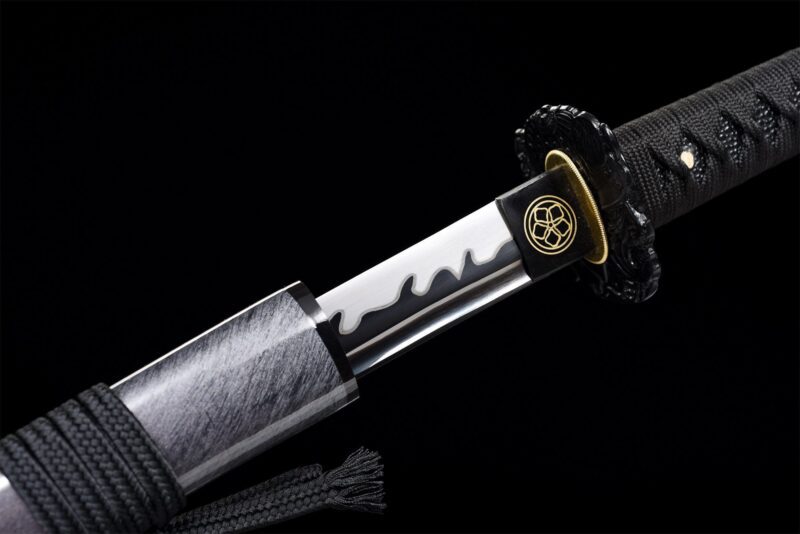
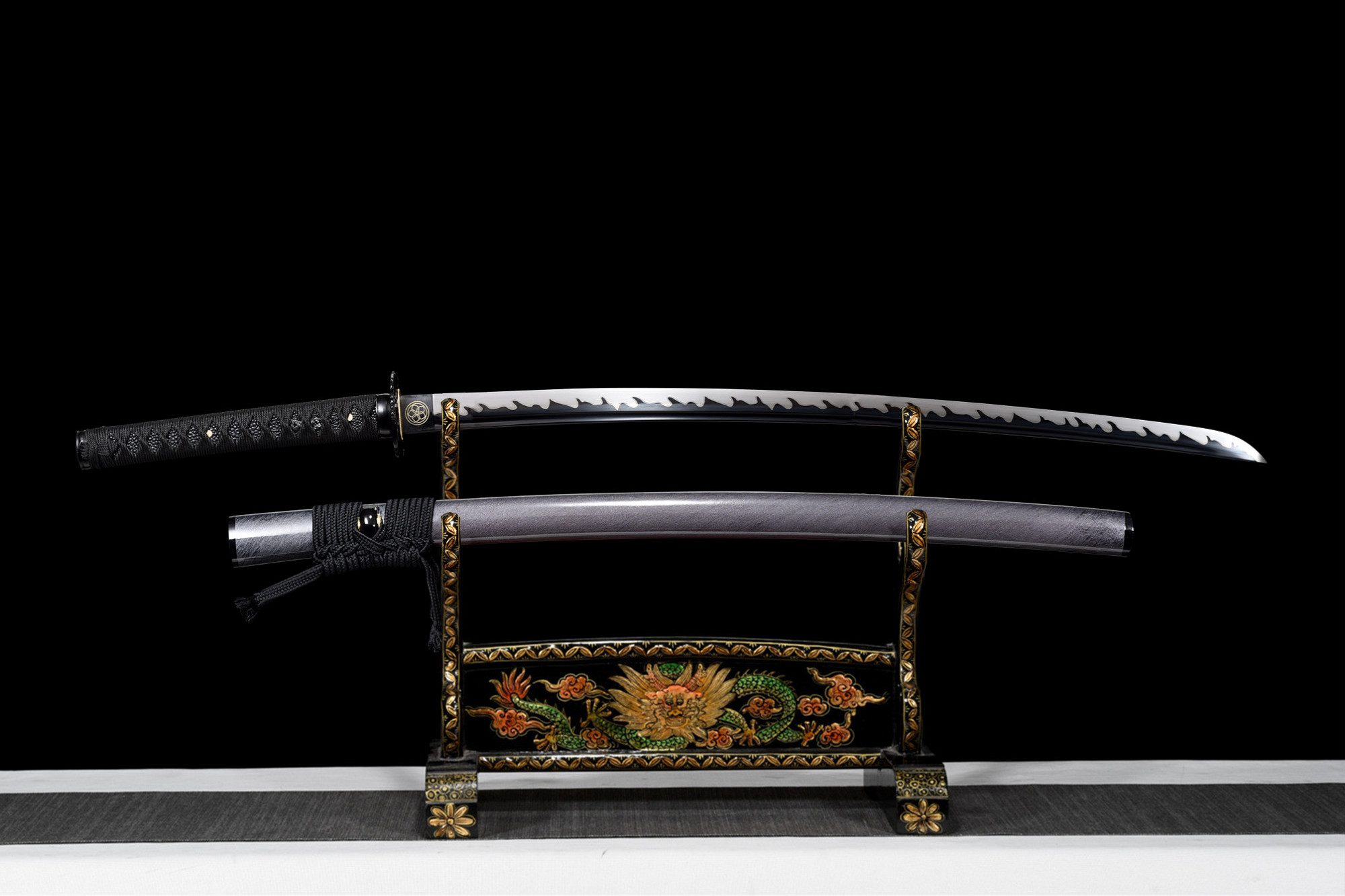
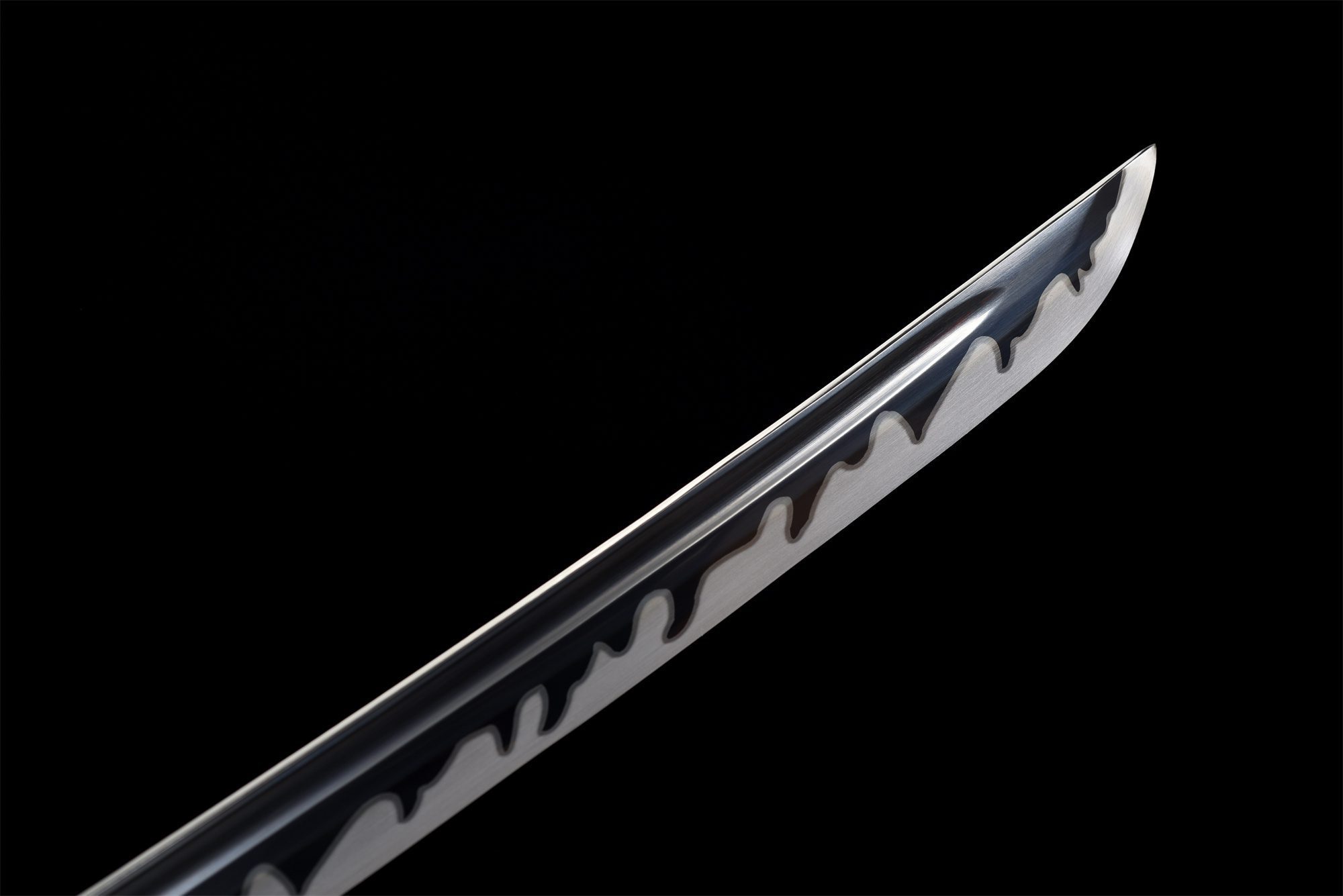
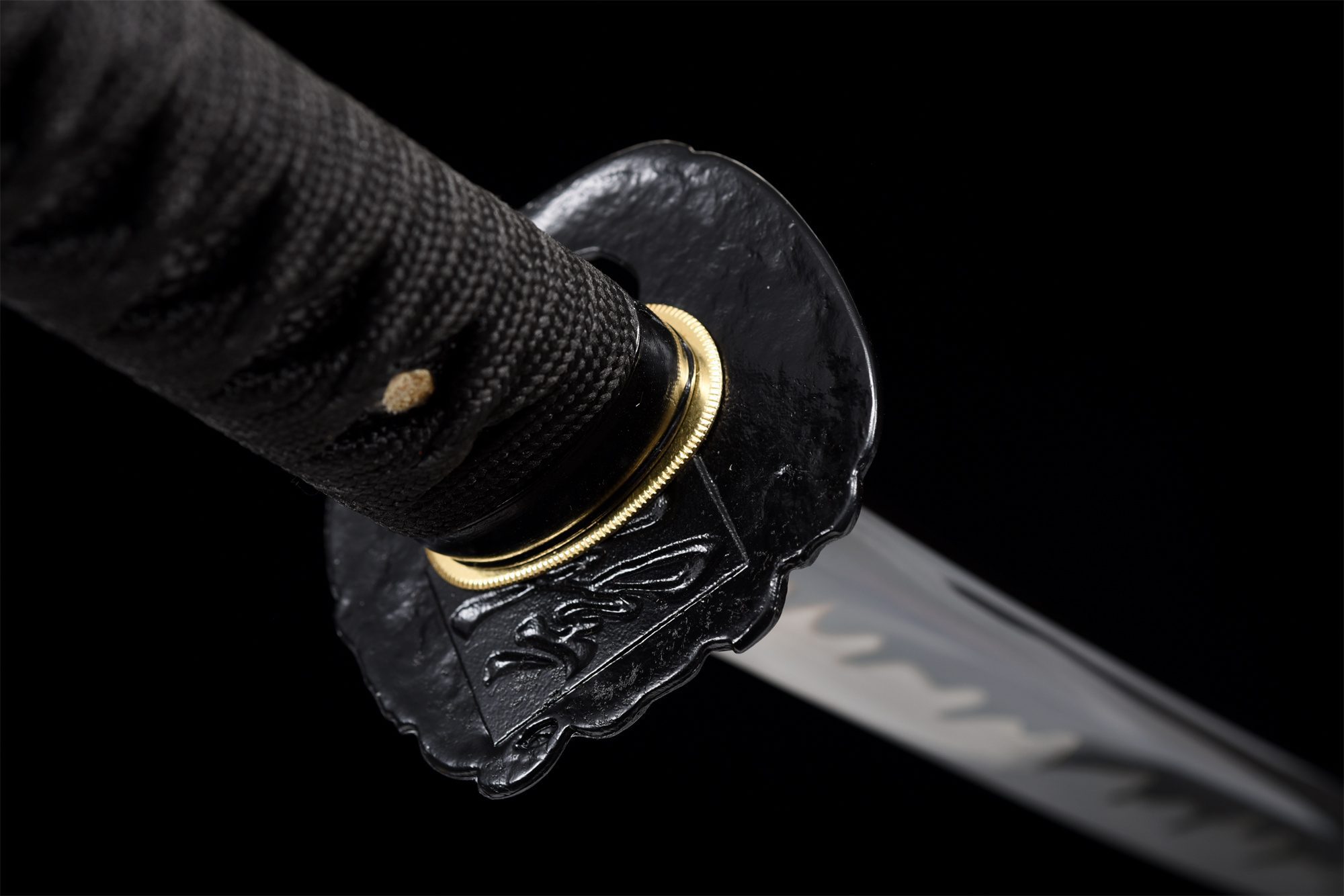
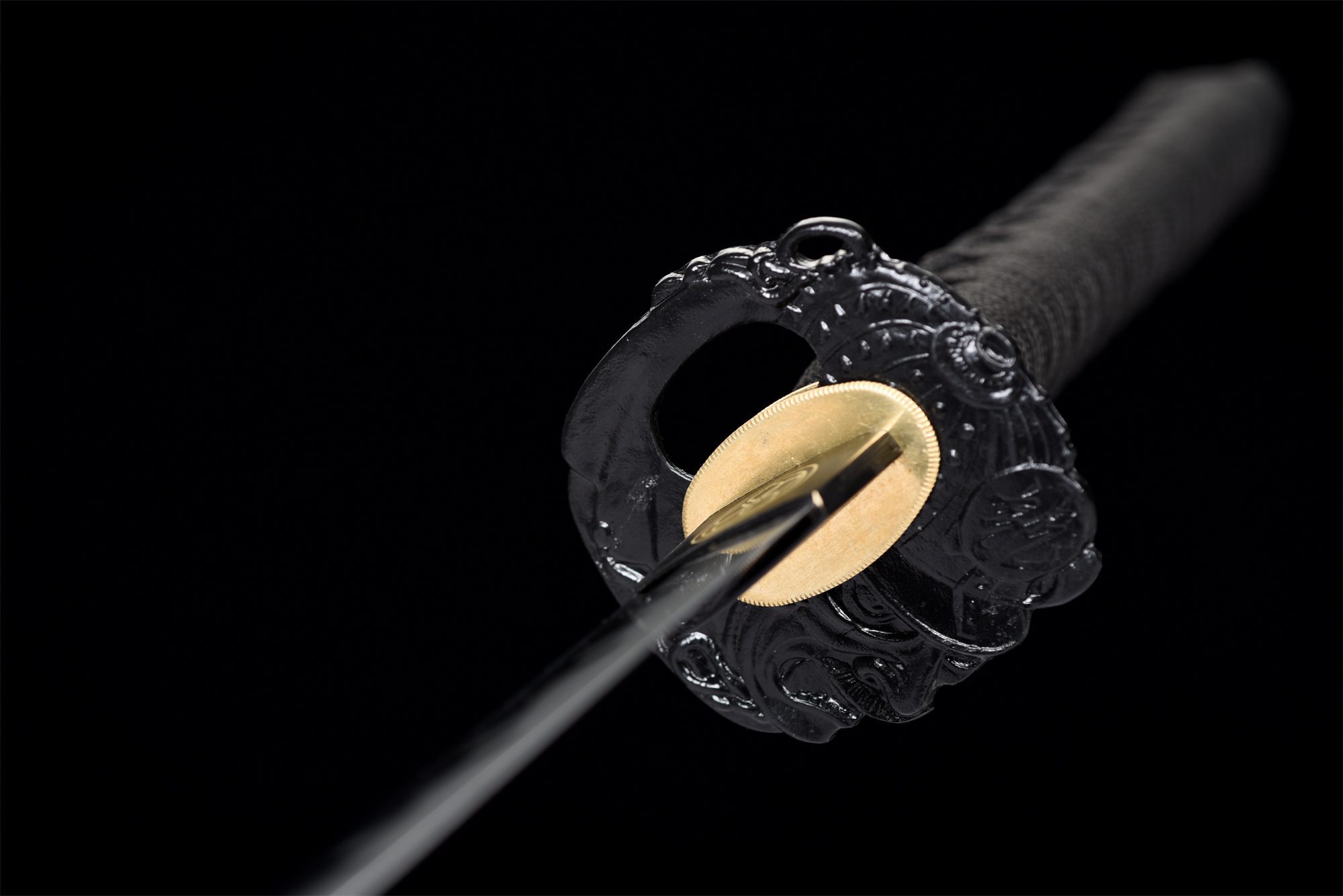
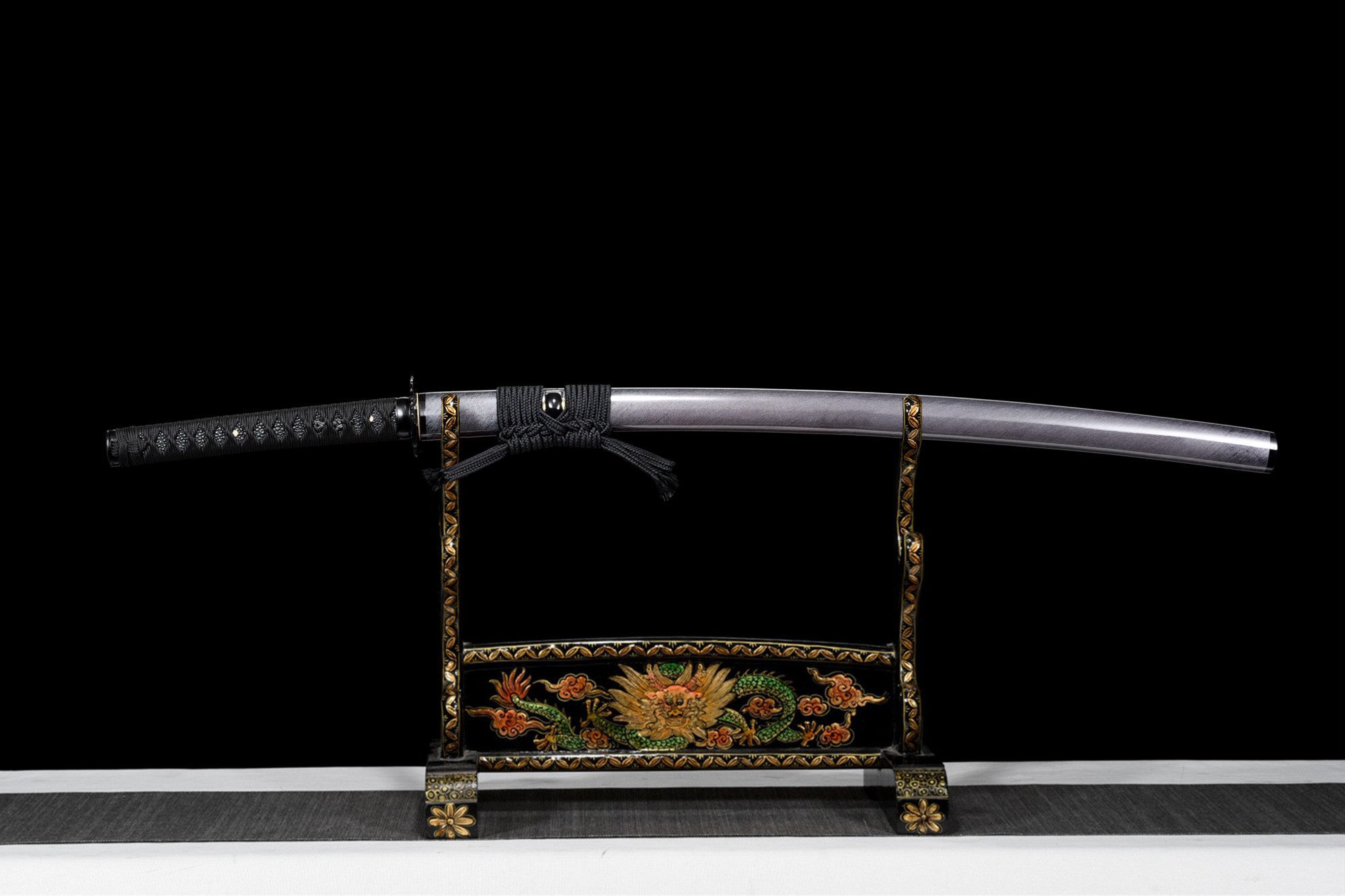
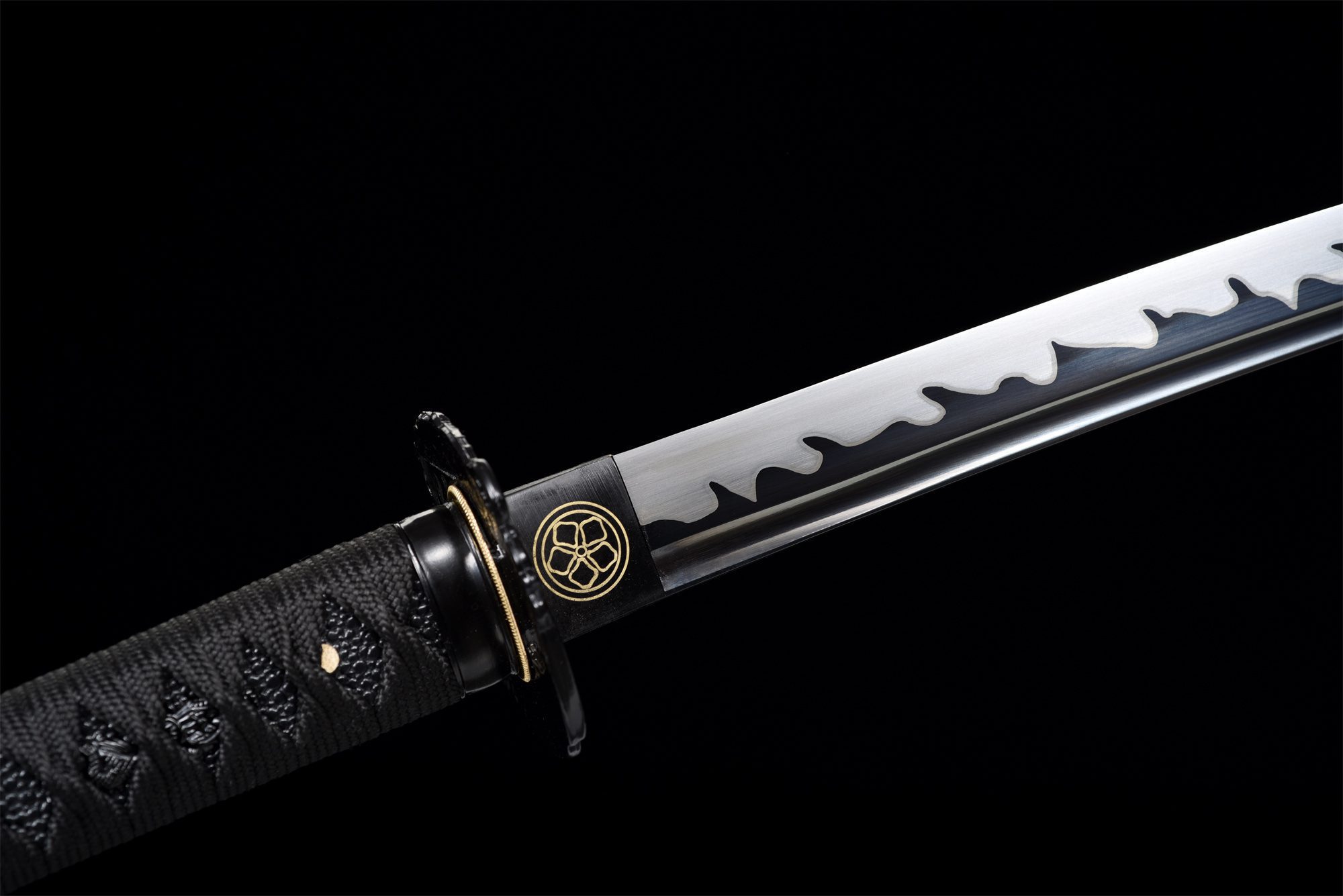
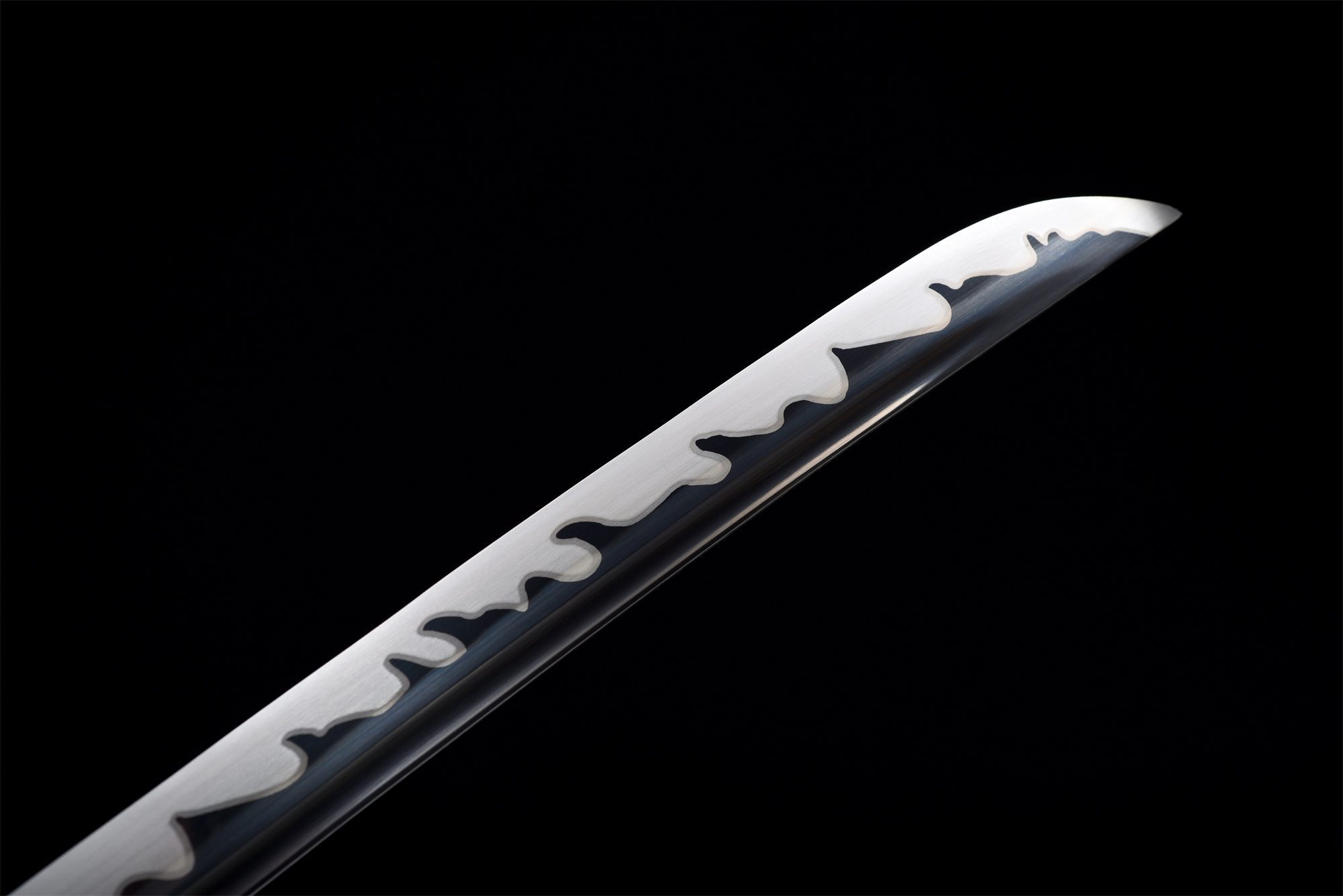
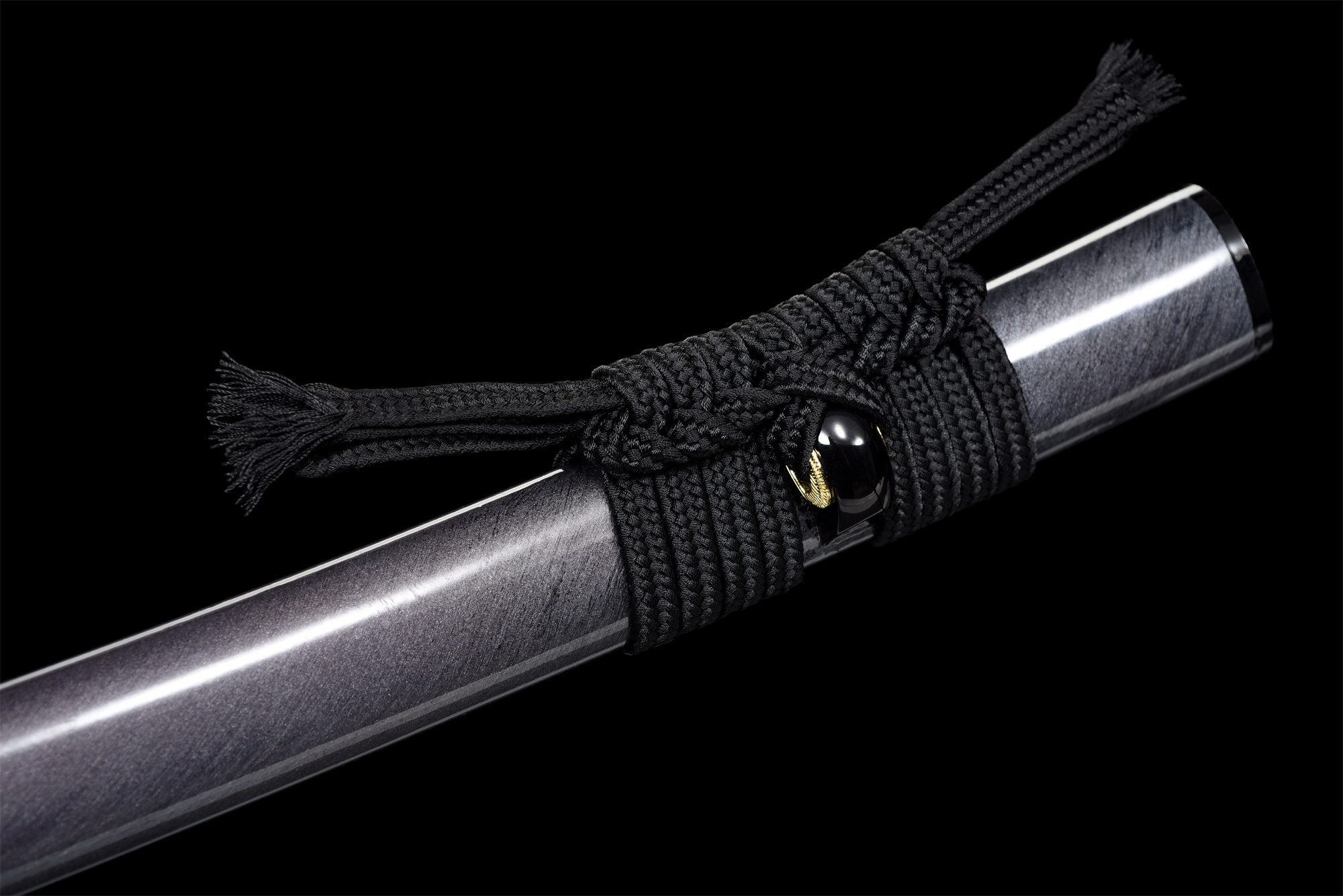
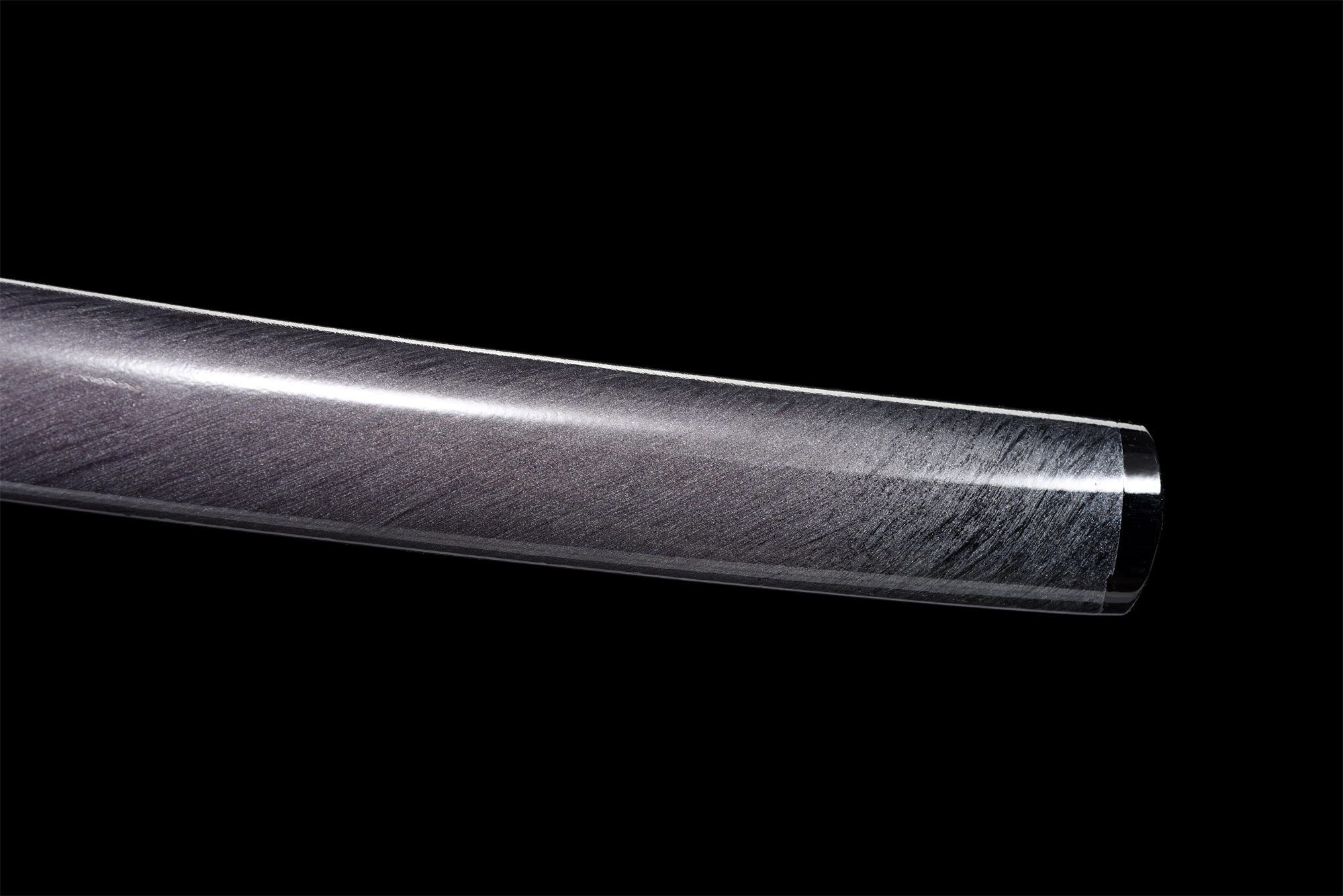
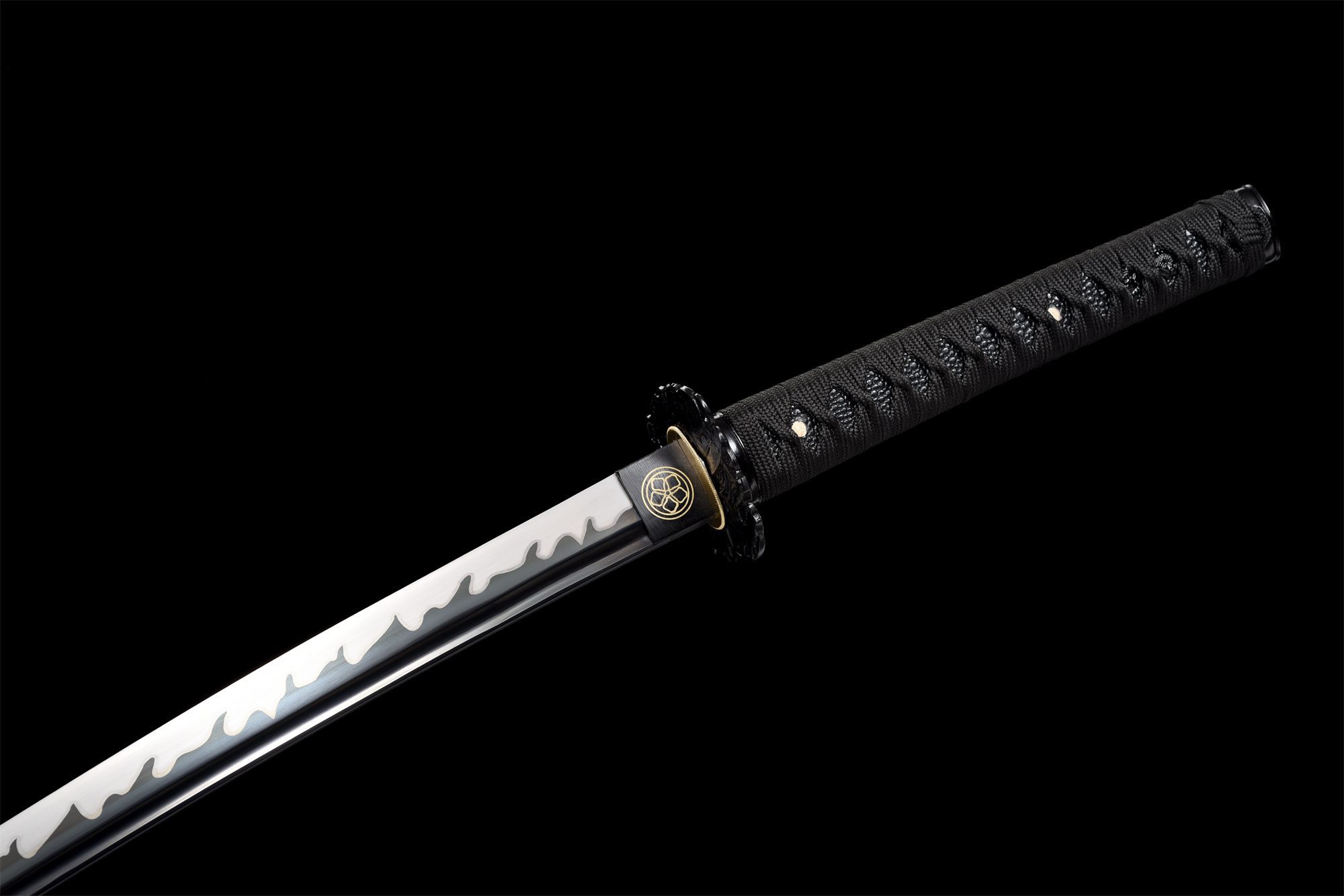
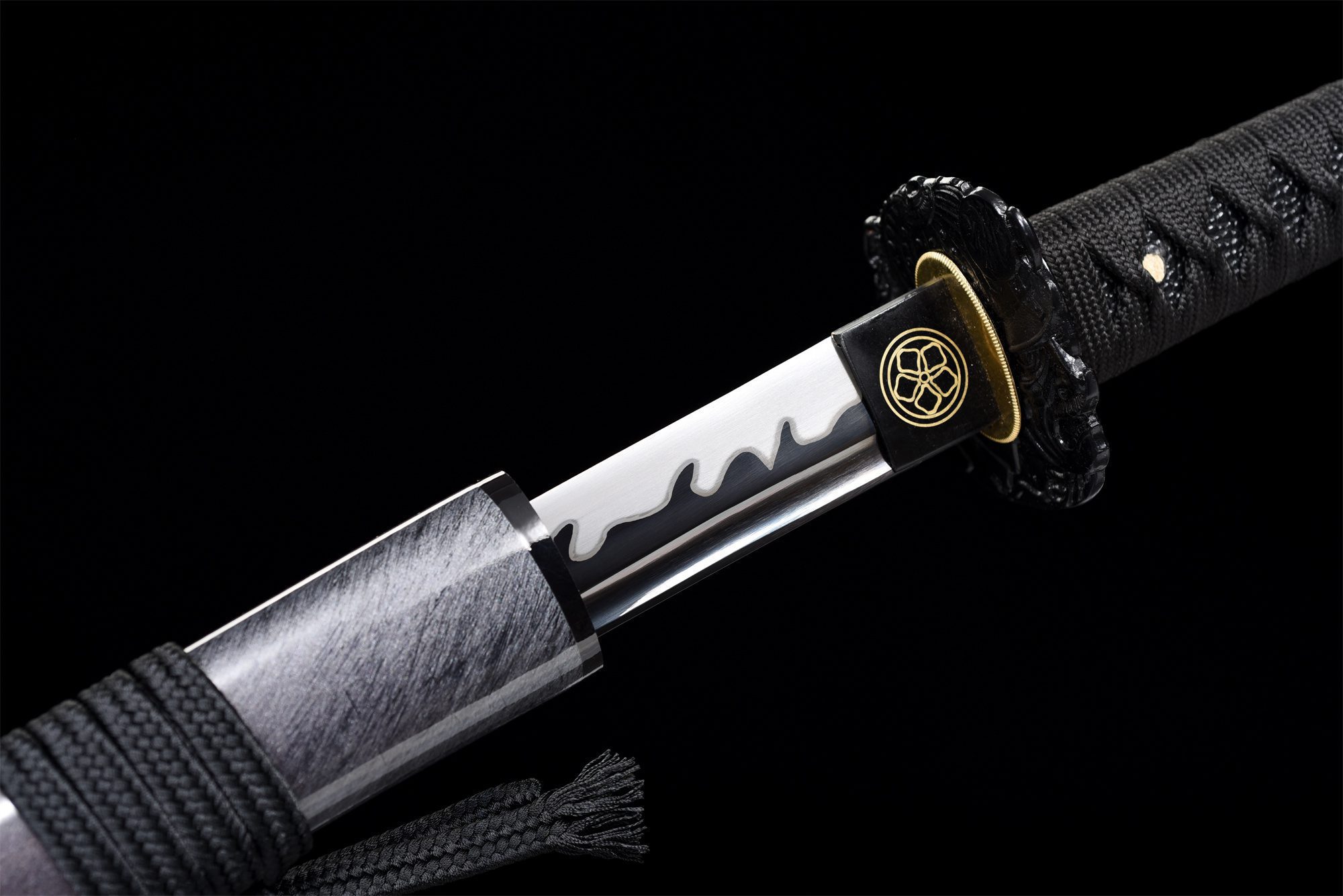
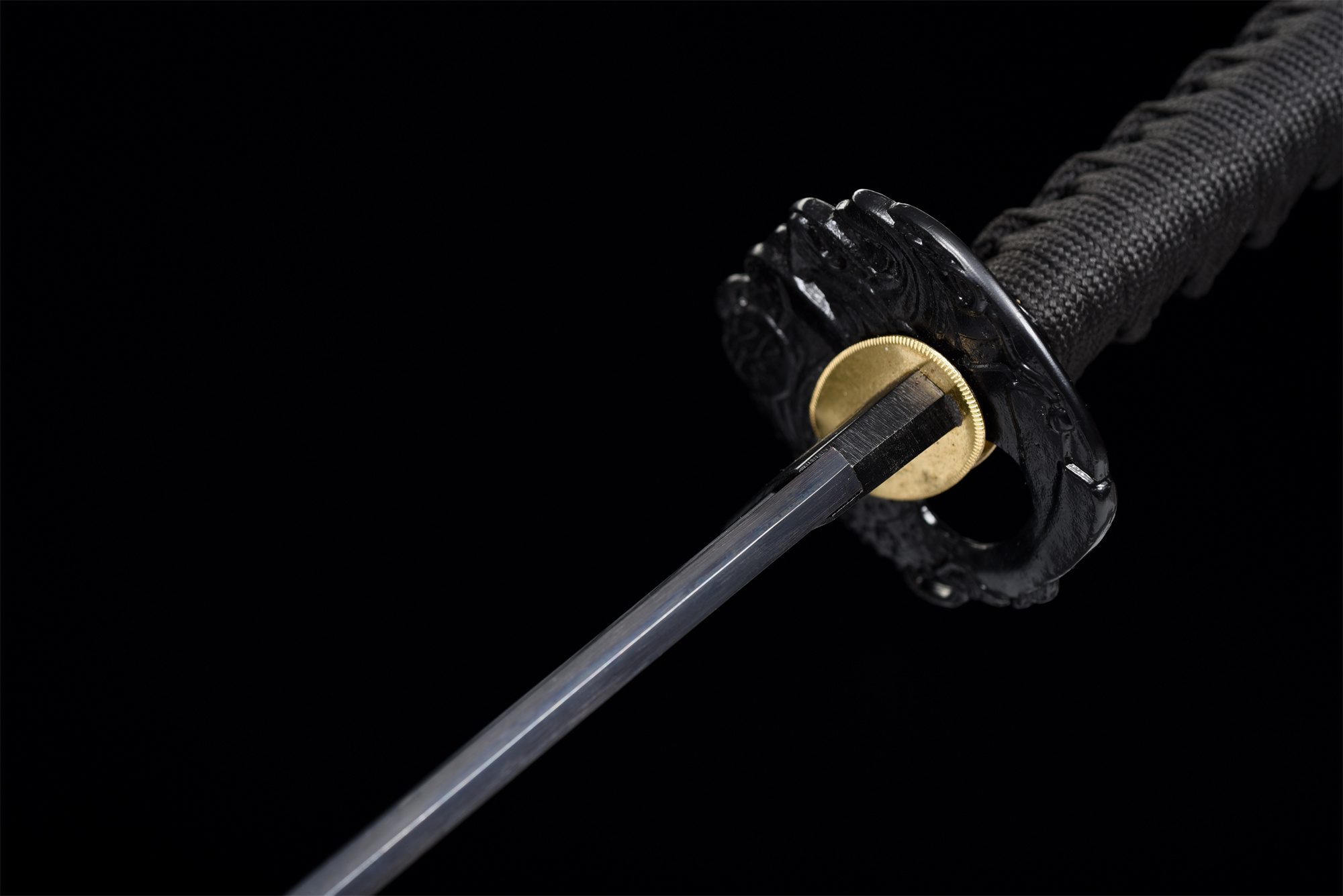
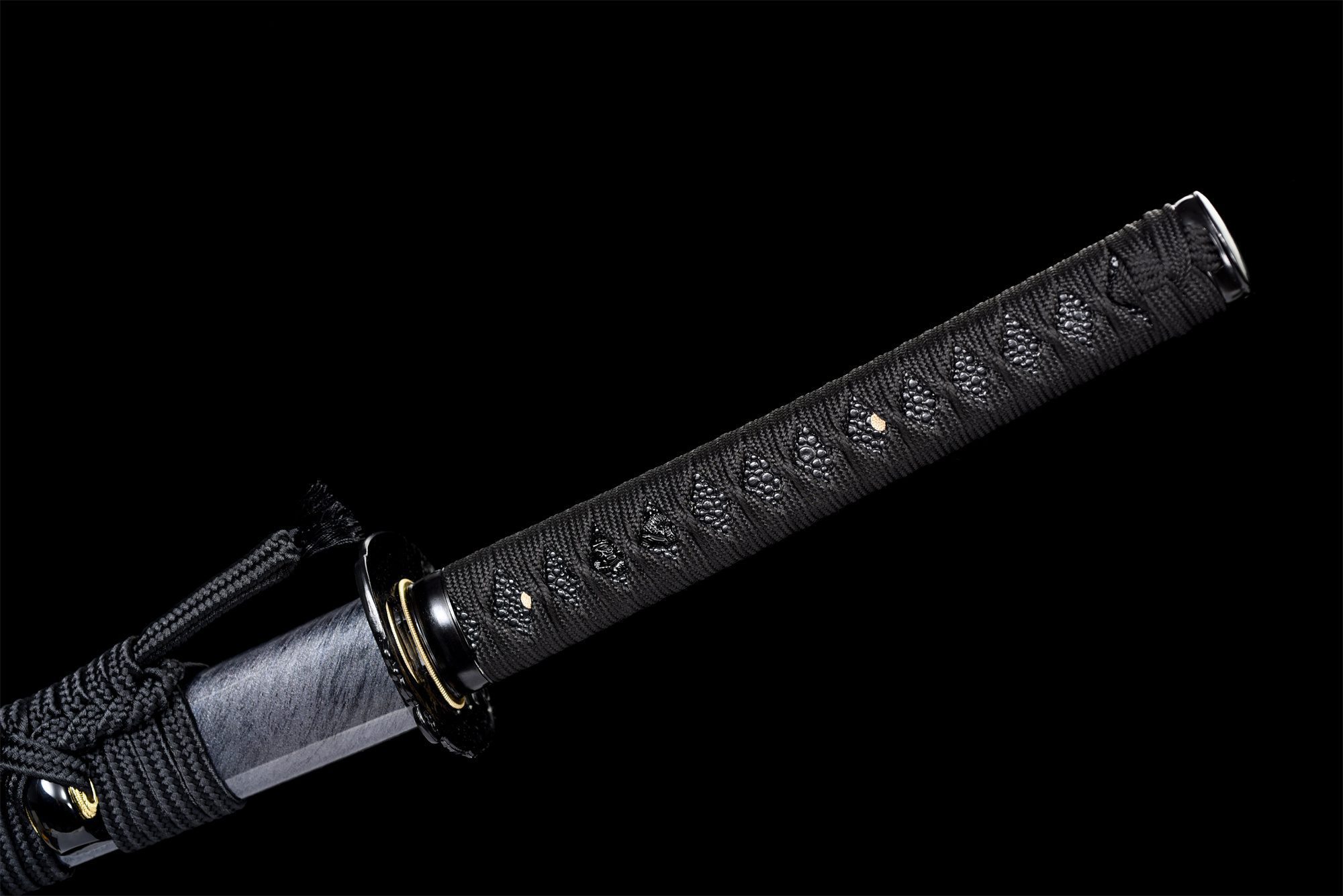
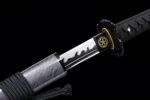
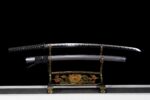
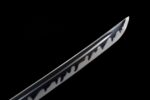
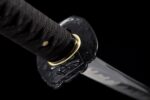
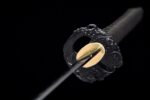
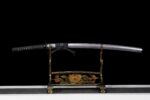
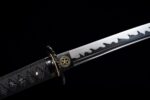
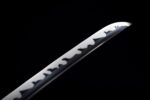
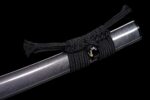
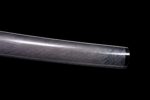
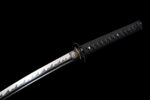
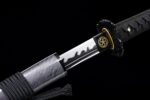
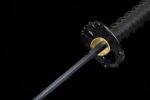


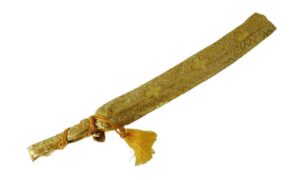


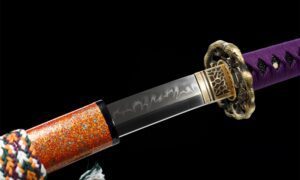
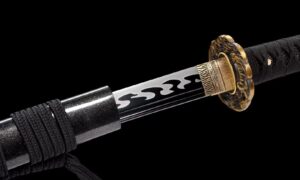
Reviews
There are no reviews yet